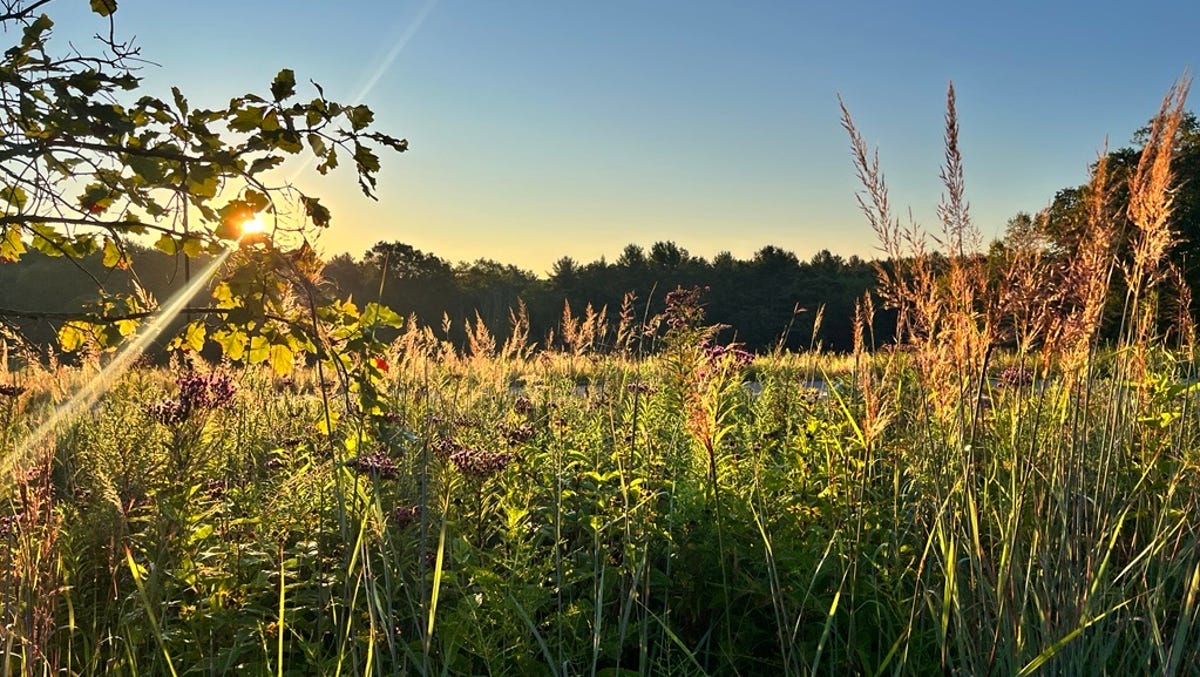Fall is upon us, and although the weather might be on the chillier side, that doesn’t mean your gardening chores have to be put on the back burner. In fact, fall is the time to tidy your garden after all that summer growth and prepare it for next spring.
We spoke with professional horticulturalists, landscapers and gardeners about fall gardening tasks that you can tackle day by day. Completing these tasks will give your garden a boost in the weeks and months to come—the end of summer doesn’t have to mean a sad-looking, overgrown outdoor space.
The best part? Not only will this fall maintenance routine help your garden look its best right now, but it will also make your gardening work easier in the future.
1. Clean up Garden Beds
Getty Images / Christopher Hopefitch
Garden beds may not be as functional in the fall and the colder winter months, but you’ll still want to clean them up to keep them in good shape for next year’s growing season.
Start by completing the following gardening tasks for your garden beds:
-
Keep most of the leaves: Contrary to popular belief, leaves will not harm or decrease the effectiveness of existing mulch, according to Eve Hanlin, a certified professional horticulturalist and founder of Garden Project Academy. “A layer of leaves will protect and insulate your plants and provide critical habitat for beneficial insects and pollinators during the winter months,” Hanlin says.
-
Remove decaying flowers and plants: According to Lucie Bradley, an expert gardener at Easy Garden Irrigation, it’s important to clear away the debris that can potentially attract garden pests such as slugs and cause damage during the colder months.
-
Collect seeds: Not enough gardeners save seeds, though for many plants it is an incredibly easy way to save money and create an abundance of new plants for free. “The best way to start collecting seeds is to stop deadheading at least a few weeks before the weather turns colder and allow blooms to develop into seed heads,” Hanlin tells Dengarden.
-
Check soil acidity: If your soil is too acidic, Hanlin recommends spreading lime to raise your spring soil pH.”Always start with a soil test from a local soil testing lab to learn your soil’s current pH,” she says. “Spread the amount over the area in the fall before colder winter temperatures arrive.”
2. Prep the Garden for Spring

Photo by AndreaObzerova on Getty Images
One of the most important gardening chores to do in the fall is prep the garden for spring. Many flowers can take a while to bloom and blossom so this type of prep can make a big difference.
Prep your garden for spring by completing these tasks:
-
Plant fall bulbs: Many types of bulbs, corms, and tubers need to be planted in the fall for spring blooms, according to Hanlin. Popular examples include tulips, daffodils, crocuses, hyacinths, alliums, peonies and irises. “Bulbs are a fantastic way to extend your bloom season, adding interest to your garden during the colder times of the year,” she tells Dengarden.
-
Plant native wildflower seeds and any plants that are native to your specific area and thrive in the local weather patterns. “Many seeds love to experience patterns of freezing and thawing, which can actually lead to better germination rates,” Hamlin says.
-
Divide perennials: Many spring-blooming perennial plants benefit from occasionally being dug up, split and replanted. “Watch for signs that your perennials need to be divided, which can include fewer blooms, congested, crowded stems or gaps and thinning patches in the centers of plantings,” Hanlin says.
3. Get Your Lawn Ready for Winter

Photo by brebca on Getty Images
Lawn preparation should be a substantial part of your fall gardening chores, especially if you have a large lawn at home. These are the fall lawn care tasks that will make a big difference to the health of your grass:
-
Add fertilizer to your lawn: According to Brian Feldman, senior director of technical operations at TruGreen, adding fertilizer supports stronger root systems, thicker turf and better resistance to cold, drought and disease through the winter months. “Be careful not to over-fertilize, as too much can lead to nutrient runoff and weak, fast-growing grass that’s more prone to damage,” he explains. “The goal is strong, sustained growth from the roots up.”
-
Mow your lawn: Continue mowing your lawn into the fall, but make sure to avoid cutting more than one-third of the grass blade at once, according to Feldman. “Shorter grass heading into winter reduces the risk of lawn disease while preventing snow mold.”
-
Aerate the lawn: Autumn is a perfect time to aerate the lawn, according to Alex Frezza, a landscape professional and founder of TGW Landscaping. “This is when you pull up plugs of soil that prohibit the grass from growing well and improve water and nutrient absorption, which is important before the winter months.”
4. Take Care of the Landscaping

Photo by pablo_rodriguez1 on Getty Images
Although it might be cold outside in the fall, you’ll want to make sure your landscaping is well taken care of during this time.
Here are some ways to care for your landscaping:
-
Maintain your tools: Taylor recommends cleaning, sharpening, and oiling your garden tools before storing them for winter. “Properly maintained tools last longer and perform better, making spring gardening tasks easier and more enjoyable,” he explains.
-
Prune trees and shrubs: Late fall is the right time to prune most trees and shrubs. “Focus on removing dead, diseased, or crossing branches to improve air circulation and prevent winter damage,” Taylor says. “Make clean cuts just above outward-facing buds or branch joints and avoid heavy pruning that could stimulate new growth vulnerable to frost.”
5. Start Cleaning up Leaves

Photo by Iuliia Burmistrova on Getty Images
Although you technically can and should keep leaves on garden beds, you may want to remove some for aesthetic reasons. Fall is the time to do this before the temperatures get colder and more inclement weather enters the equation.
-
Remove some leaves: It can be helpful to clear the edges of garden beds, but keep the leaves in between plantings where they’re less likely to blow away, according to Hanlin.
-
Mulch some leaves: Mulching leaves is one of the easiest and most sustainable ways to return nutrients to your lawn, according to Feldman. “Mulched leaves feed your soil, improve structure and support healthy grass growth,” he says.
These are the essential fall gardening tasks that will help make your garden healthier, more productive and better-looking both right now and next spring. So, don’t put your gardening gloves away just yet—there’s still work to do!
Related: Is It Too Late to Plant Lettuce? These Veggies Thrive in Fall
This story was originally reported by Dengarden on Sep 20, 2025, where it first appeared in the Gardening section. Add Dengarden as a Preferred Source by clicking here.









